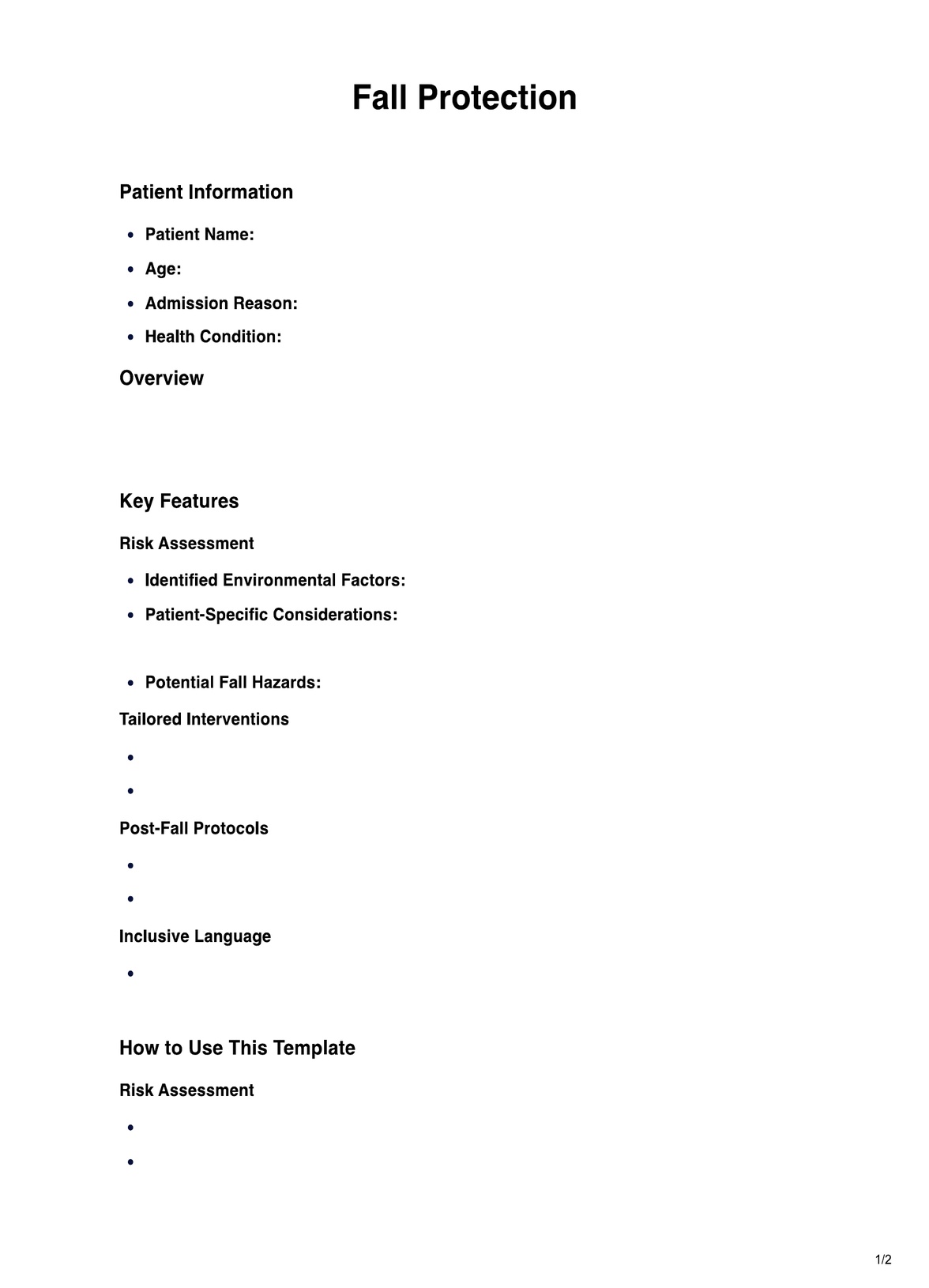To create a Fall Protection template, follow these steps: Conduct a thorough risk assessment—tailor interventions based on identified risks. Implement post-fall protocols for continuous improvement. Ensure clear and concise documentation.

Fall Protection
Enhance patient safety with our Fall Protection Template! Tailored risk assessments, interventions, and post-fall protocols for a secure healthcare environment.
Use Template
Fall Protection Template
Commonly asked questions
Fall Protection Templates are used during admission assessments, care planning, environmental audits, staff training, and continuous improvement initiatives to prevent falls in healthcare settings.
Practitioners use the template to assess risks, implement tailored interventions, conduct environmental audits, promote positive communication, and follow post-fall protocols for analysis and improvement.
EHR and practice management software
Get started for free
*No credit card required
Free
$0/usd
Unlimited clients
Telehealth
1GB of storage
Client portal text
Automated billing and online payments











